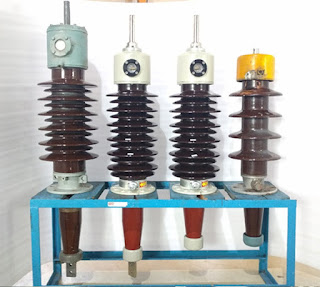Bushings of Transformers and Its Purpose
Bushings of Transformers
Bushings are crucial parts of transformers that provide a number of crucial functions. In order to prevent any electrical contact between the energised elements inside the transformer and the grounded components, such the tank and the earth, these structures serve as insulators by allowing electrical conductors to pass through the grounded metal walls of the transformer tank. The following are transformer bushings' primary functions:
1. Insulation:
By serving as insulating barriers, bushings stop electrical currents from passing through the transformer tank's exterior. For the transformer to remain safe and intact, this insulation is essential.
2. Conductor Support:
The conductors that enter or depart the transformer are supported by bushings. They guarantee that the electrical current only travels where it is intended to by holding the conductors in place and keeping them from coming into touch with the grounded portions of the transformer.
3. Voltage Control:
Bushings are made to resist particular voltage ranges. They support the regulation of voltage and guarantee that the transformer transfers the appropriate quantity of electrical energy. Depending on the transformer's voltage class, several bushing types are employed.
4. Preventing Corrosion:
Bushings act as a sealed channel for the conductors, keeping dust, moisture, and other impurities out of the transformer. By doing this, the transformer's performance is sustained throughout time and the risk of corrosion is decreased.
5. Cooling:
Certain transformer bushings feature devices, such as cooling fins, to help dissipate heat produced during operation. Effective cooling is essential to a transformer's long-term health and performance.
6. Easy Monitoring:
Taps that enable the connecting of monitoring equipment are frequently found on bushings. This makes it easier to measure several factors, such as voltage, current, and temperature, allowing operators to keep an eye on the performance and condition of the transformer.
To sum up, bushings in transformers are essential for supporting conductors, regulating voltage, avoiding corrosion, facilitating cooling, and allowing simple monitoring. They are necessary for transformers to operate safely and effectively in a variety of electrical systems.
.png)


Comments
Post a Comment